-
 Bitcoin
Bitcoin $82,422.7980
-3.07% -
 Ethereum
Ethereum $1,847.8527
-2.37% -
 Tether USDt
Tether USDt $0.9994
-0.04% -
 XRP
XRP $2.0729
-6.17% -
 BNB
BNB $603.0129
-4.27% -
 Solana
Solana $125.3687
-4.58% -
 USDC
USDC $1.0004
0.03% -
 Dogecoin
Dogecoin $0.1703
-5.67% -
 Cardano
Cardano $0.6675
-4.70% -
 TRON
TRON $0.2337
1.58% -
 Toncoin
Toncoin $3.6865
-7.87% -
 Chainlink
Chainlink $13.6905
-4.32% -
 UNUS SED LEO
UNUS SED LEO $9.7096
-1.12% -
 Avalanche
Avalanche $19.8706
-2.17% -
 Stellar
Stellar $0.2655
-3.47% -
 Shiba Inu
Shiba Inu $0.0...01270
-3.93% -
 Sui
Sui $2.3342
-8.15% -
 Hedera
Hedera $0.1705
-6.89% -
 Litecoin
Litecoin $85.5696
-2.75% -
 Polkadot
Polkadot $4.0949
-4.43% -
 MANTRA
MANTRA $6.3176
-1.29% -
 Bitcoin Cash
Bitcoin Cash $303.0131
-2.84% -
 Bitget Token
Bitget Token $4.6537
-1.96% -
 Pi
Pi $0.8221
-0.20% -
 Dai
Dai $0.9999
0.00% -
 Ethena USDe
Ethena USDe $0.9992
0.04% -
 Hyperliquid
Hyperliquid $12.4886
-9.08% -
 Monero
Monero $215.7733
-2.33% -
 Uniswap
Uniswap $6.0537
-4.22% -
 Aptos
Aptos $5.3582
-2.68%
what is the purpose of blockchain technology
Blockchain uses decentralization, cryptography, and consensus mechanisms to create a secure, transparent, and tamper-proof record of transactions, impacting various industries beyond cryptocurrencies.
Mar 24, 2025 at 03:57 pm
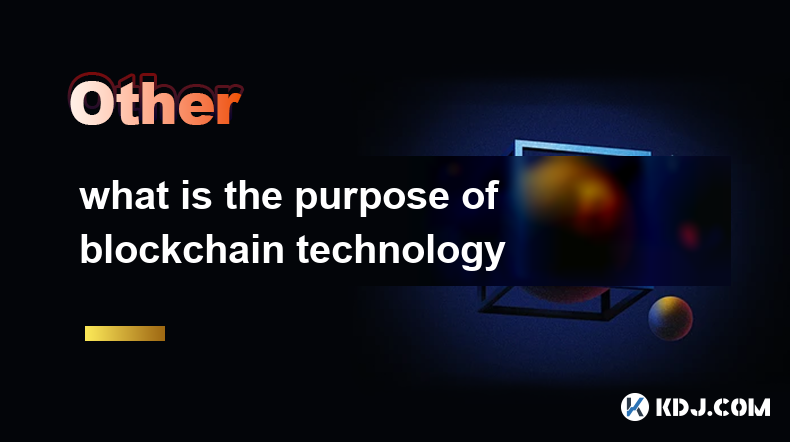
Key Points:
- Blockchain's core purpose is to create a secure, transparent, and tamper-proof record of transactions.
- This is achieved through decentralization, cryptography, and consensus mechanisms.
- Its applications extend far beyond cryptocurrencies, impacting various industries.
- Understanding blockchain's purpose requires examining its underlying principles and functionalities.
What is the Purpose of Blockchain Technology?
The purpose of blockchain technology is fundamentally to provide a secure and transparent method for recording and verifying transactions. Unlike traditional databases controlled by a central authority, a blockchain is decentralized, meaning it's distributed across a network of computers. This eliminates single points of failure and reduces the risk of manipulation. The technology's core strength lies in its ability to create a permanent, auditable record that is resistant to alteration or deletion.
Blockchain's security stems from cryptography. Each transaction is cryptographically secured and linked to the previous one, forming a chain of blocks. Altering a single block would require altering all subsequent blocks, a computationally infeasible task given the scale of most blockchains. This inherent security makes it ideal for applications requiring high levels of trust and transparency.
The concept of consensus mechanisms is crucial to understanding blockchain's function. These mechanisms ensure that all participants in the network agree on the validity of new blocks added to the chain. Different blockchains use various consensus mechanisms, each with its own strengths and weaknesses. Popular examples include Proof-of-Work (PoW) and Proof-of-Stake (PoS). These algorithms ensure the integrity and consistency of the blockchain.
Beyond cryptocurrencies, blockchain's purpose extends to various sectors. Its transparency and security are valuable in supply chain management, enabling tracking of goods from origin to consumer. In healthcare, blockchain can securely store and share patient medical records, improving data management and interoperability. Similarly, voting systems could leverage blockchain to ensure the integrity and transparency of elections. The possibilities are vast and continue to evolve.
How Does Blockchain Achieve its Purpose?
The decentralized nature of blockchain is central to its purpose. Instead of relying on a single entity to manage and control data, blockchain distributes the responsibility across a network of nodes. This makes it significantly more resilient to attacks and censorship. If one node fails, the network continues to function.
Cryptography plays a vital role in securing transactions and maintaining the integrity of the blockchain. Each block contains a cryptographic hash, a unique digital fingerprint, which is linked to the previous block's hash. This creates a chain, and any alteration to a block would change its hash, making the alteration immediately detectable.
Consensus mechanisms are essential for validating and adding new blocks to the chain. These mechanisms ensure that all nodes agree on the state of the blockchain, preventing conflicts and maintaining data integrity. The specific mechanism employed influences the blockchain's performance and security characteristics.
Specific Applications of Blockchain Technology:
- Cryptocurrencies: Bitcoin, the first cryptocurrency, demonstrated the potential of blockchain for creating decentralized digital currencies. Many other cryptocurrencies have since emerged, each with its unique features and functionalities.
- Supply Chain Management: Tracking goods through the supply chain enhances transparency and accountability. Consumers can verify the authenticity and origin of products, combating counterfeiting and improving traceability.
- Healthcare: Securely storing and sharing patient medical records enhances data privacy and interoperability. Patients can control access to their data, improving their healthcare experience.
- Voting Systems: Blockchain can improve the security and transparency of elections, reducing the risk of fraud and increasing voter confidence.
- Digital Identity: Blockchain can facilitate the creation and management of secure digital identities, reducing reliance on centralized authorities and improving privacy.
Step-by-Step Guide to Understanding a Simple Blockchain Transaction:
- Transaction Initiation: A user initiates a transaction, for example, sending cryptocurrency.
- Broadcast: The transaction is broadcast to the network of nodes.
- Verification: Nodes verify the transaction using cryptographic techniques.
- Block Creation: Verified transactions are grouped into a block.
- Block Addition: The new block is added to the blockchain after consensus is reached.
Frequently Asked Questions:
Q: Is blockchain technology only used for cryptocurrencies?
A: No, blockchain technology has far broader applications beyond cryptocurrencies. Its decentralized, secure, and transparent nature makes it suitable for various industries and use cases.
Q: How secure is blockchain technology?
A: Blockchain's security is based on cryptography and consensus mechanisms. While not perfectly invulnerable, it's significantly more secure than traditional centralized systems. The security level also depends on the specific implementation and consensus mechanism used.
Q: What are the limitations of blockchain technology?
A: Scalability remains a challenge for some blockchains. Transaction speeds and processing capacity can be limited, depending on the network's design and consensus mechanism. Energy consumption is another concern, particularly with PoW consensus. Furthermore, the regulatory landscape around blockchain is still evolving.
Q: How does blockchain ensure transparency?
A: Blockchain's transparency stems from its public and immutable ledger. All transactions are recorded on the blockchain, and anyone with access can view them. However, depending on the type of blockchain, user identities might be pseudonymous rather than completely transparent.
Q: What is the difference between public and private blockchains?
A: Public blockchains are open to anyone, while private blockchains are controlled by a specific organization or group. Public blockchains offer greater transparency and decentralization, while private blockchains provide more control and confidentiality.
Disclaimer:info@kdj.com
The information provided is not trading advice. kdj.com does not assume any responsibility for any investments made based on the information provided in this article. Cryptocurrencies are highly volatile and it is highly recommended that you invest with caution after thorough research!
If you believe that the content used on this website infringes your copyright, please contact us immediately (info@kdj.com) and we will delete it promptly.
- XRP (XRP) vs. Shiba Inu (SHIB): Which Token Is the Better Buy?
- 2025-03-29 18:50:12
- Dogecoin (DOGE) price may be preparing to rebound as signs of bearish momentum fade
- 2025-03-29 18:50:12
- MonkeDAO Pioneers Bitcoin Integration: Adopts Solana's zBTC Token for DeFi Innovation
- 2025-03-29 18:45:12
- Terraform Labs to Reimburse Crypto Losses After Terra Collapse
- 2025-03-29 18:45:12
- The Cronos token’s value surged significantly, climbing by as much as 17 percent
- 2025-03-29 18:40:13
- Hyperliquid (HYPE) Price in Turmoil Following the JELLY Incident
- 2025-03-29 18:40:13
Related knowledge
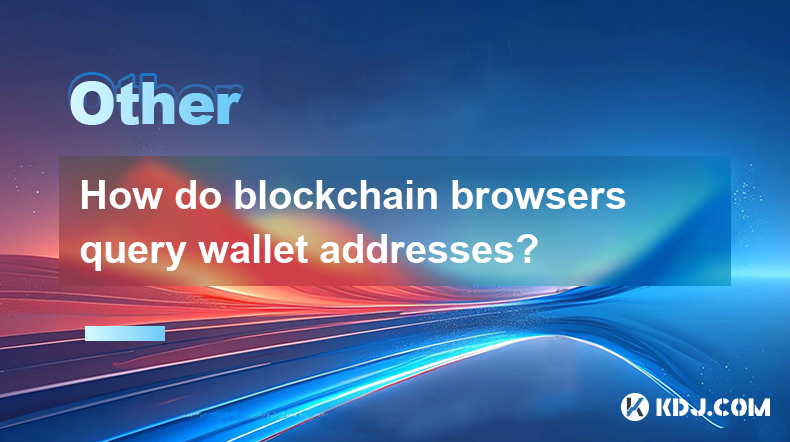
How do blockchain browsers query wallet addresses?
Mar 29,2025 at 05:21pm
Understanding Blockchain Explorers and Wallet Address QueriesBlockchain browsers, often called blockchain explorers, are essential tools for interacting with and investigating blockchain networks. They provide a user-friendly interface to view transaction history, block information, and most importantly, the details associated with specific wallet addr...
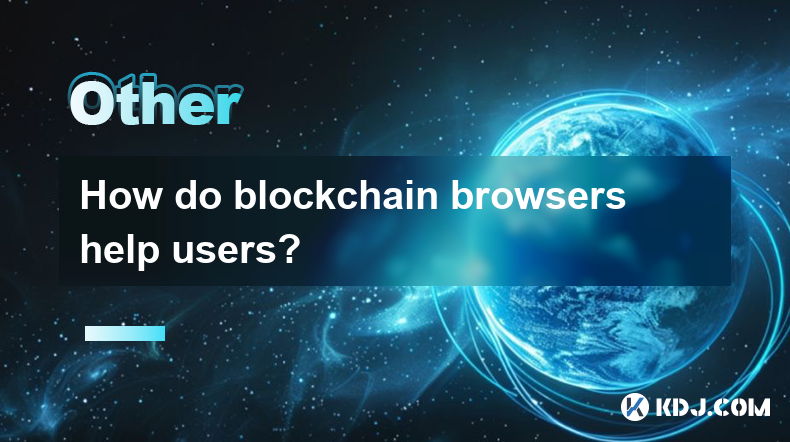
How do blockchain browsers help users?
Mar 29,2025 at 08:28am
Understanding the Role of Blockchain BrowsersBlockchain browsers are specialized tools designed to interact with blockchain networks. Unlike traditional web browsers like Chrome or Firefox, they provide a user-friendly interface for exploring and interacting with the decentralized world of cryptocurrencies and blockchain applications. They offer functi...
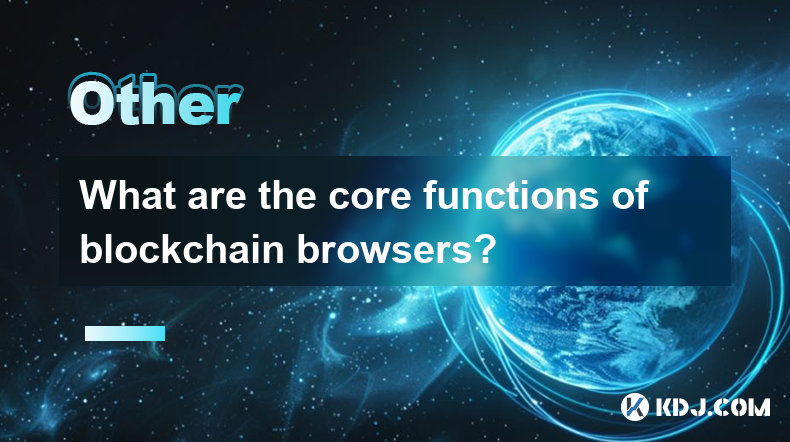
What are the core functions of blockchain browsers?
Mar 29,2025 at 01:50pm
Exploring the Functionality of Blockchain BrowsersBlockchain browsers are specialized tools designed to interact with and explore various blockchain networks. Unlike traditional web browsers, they offer functionalities specifically tailored to the decentralized and transparent nature of blockchain technology. They provide users with a user-friendly int...
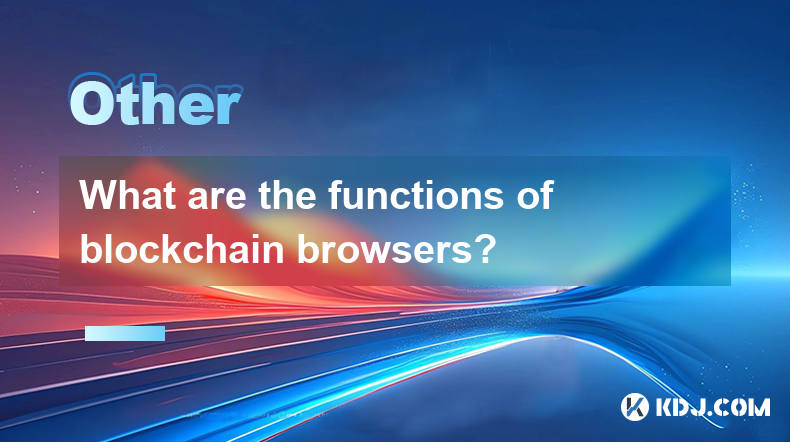
What are the functions of blockchain browsers?
Mar 29,2025 at 07:14am
Exploring the Functionality of Blockchain BrowsersBlockchain browsers are specialized tools designed to interact with and explore various aspects of blockchain networks. Unlike traditional web browsers, they provide functionalities specifically tailored for navigating and understanding the decentralized nature of blockchain technology. They are crucial...
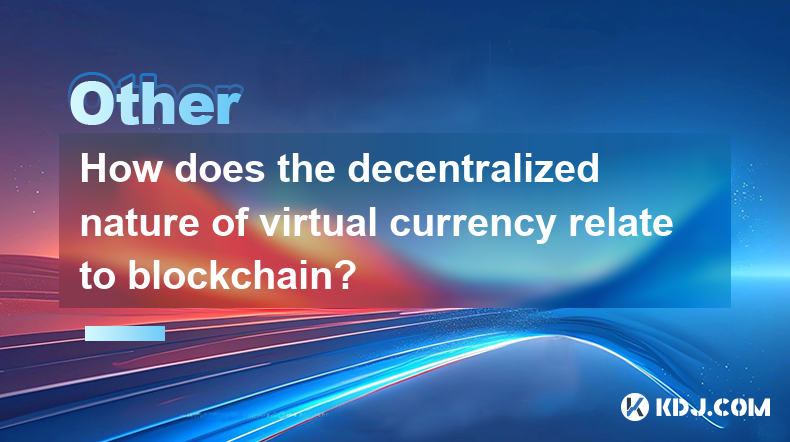
What is the relationship between the decentralized characteristics of virtual currencies and blockchain?
Mar 28,2025 at 06:00pm
In the wave of digital finance, virtual currency attracts everyone's attention with its unique charm, and its decentralized characteristics have become the key to distinguish it from traditional currencies. So what is the close connection between the decentralized characteristics of virtual currencies and blockchain? Don't worry, let's find ...

How does "cross-chain bridge" of blockchain work?
Mar 28,2025 at 03:15pm
Understanding Cross-Chain Bridges in the Cryptocurrency WorldCross-chain bridges are crucial infrastructure in the burgeoning cryptocurrency ecosystem. They facilitate the transfer of digital assets between different blockchain networks, each with its unique architecture and functionalities. This ability to move assets across chains opens up a world of...

How do blockchain browsers query wallet addresses?
Mar 29,2025 at 05:21pm
Understanding Blockchain Explorers and Wallet Address QueriesBlockchain browsers, often called blockchain explorers, are essential tools for interacting with and investigating blockchain networks. They provide a user-friendly interface to view transaction history, block information, and most importantly, the details associated with specific wallet addr...

How do blockchain browsers help users?
Mar 29,2025 at 08:28am
Understanding the Role of Blockchain BrowsersBlockchain browsers are specialized tools designed to interact with blockchain networks. Unlike traditional web browsers like Chrome or Firefox, they provide a user-friendly interface for exploring and interacting with the decentralized world of cryptocurrencies and blockchain applications. They offer functi...

What are the core functions of blockchain browsers?
Mar 29,2025 at 01:50pm
Exploring the Functionality of Blockchain BrowsersBlockchain browsers are specialized tools designed to interact with and explore various blockchain networks. Unlike traditional web browsers, they offer functionalities specifically tailored to the decentralized and transparent nature of blockchain technology. They provide users with a user-friendly int...

What are the functions of blockchain browsers?
Mar 29,2025 at 07:14am
Exploring the Functionality of Blockchain BrowsersBlockchain browsers are specialized tools designed to interact with and explore various aspects of blockchain networks. Unlike traditional web browsers, they provide functionalities specifically tailored for navigating and understanding the decentralized nature of blockchain technology. They are crucial...

What is the relationship between the decentralized characteristics of virtual currencies and blockchain?
Mar 28,2025 at 06:00pm
In the wave of digital finance, virtual currency attracts everyone's attention with its unique charm, and its decentralized characteristics have become the key to distinguish it from traditional currencies. So what is the close connection between the decentralized characteristics of virtual currencies and blockchain? Don't worry, let's find ...

How does "cross-chain bridge" of blockchain work?
Mar 28,2025 at 03:15pm
Understanding Cross-Chain Bridges in the Cryptocurrency WorldCross-chain bridges are crucial infrastructure in the burgeoning cryptocurrency ecosystem. They facilitate the transfer of digital assets between different blockchain networks, each with its unique architecture and functionalities. This ability to move assets across chains opens up a world of...
See all articles






















































































